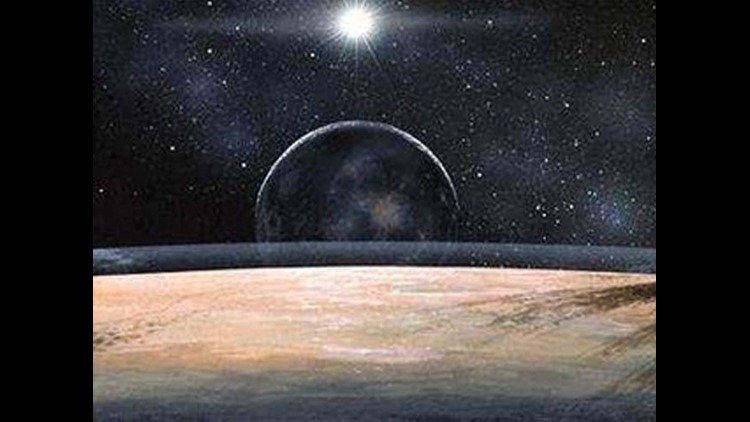Pluto, which was demoted from planet to dwarf planet in 2006, will reach its closes approach to Earth on July 4, 2014.
Pluto is about 1,000 times fainter than the dimmest stars visible to the naked eye, but Slooh Observatory will highlight out close proximity to the planet-turned-dwarf-planet in a live broadcast just before America’s Independence Day. The live stream event will also highlight the dwarf planet Ceres and asteroid Vesta, which will meet in the same small spot in the sky where they will be visible with a telescope just above the bright star Spica in the constellation Virgo.
The Slooh Observatory event will stream live online beginning at 7 p.m. Central time Thursday, July 3, 2014. You can watch the live stream in the player below, or by clicking here.
“This is Pluto’s closest approach until the 23rd century, and its final one before its secrets are finally revealed by New Horizons craft,” said Slooh astronomer Bob Berman, “Not to mention it comes nearest smack on the fourth of July.”
Nine years after it was launched, the New Horizons spacecraft was expected to finally travel past Pluto and its moons in July 2015. New Horizons, which was launched in January 2006, was the first spacecraft ever launched to travel to Pluto.
New Horizons is about eight feet in diameter, and weighed about 1,050 pounds when it launched. The spacecraft is about the size and shape of a baby grand piano, according to NASA.
About 8-1/2 hours after it launched, New Horizons passed the Moon. It passed Mars on April 7, 20016. New Horizons made its closest approach to Jupiter on February 28, 2007. It crossed the orbit of Saturn on June 8, 2008 and it crossed the orbit of Uranus on March 18, 2011.
“New Horizons crosses the orbit of Neptune on August 25, 2014 — exactly 25 years after Voyager 2 made its historic exploration of that giant planet,” according to NASA.
Follow NASA’s tracking of where New Horizons is now – click here.



